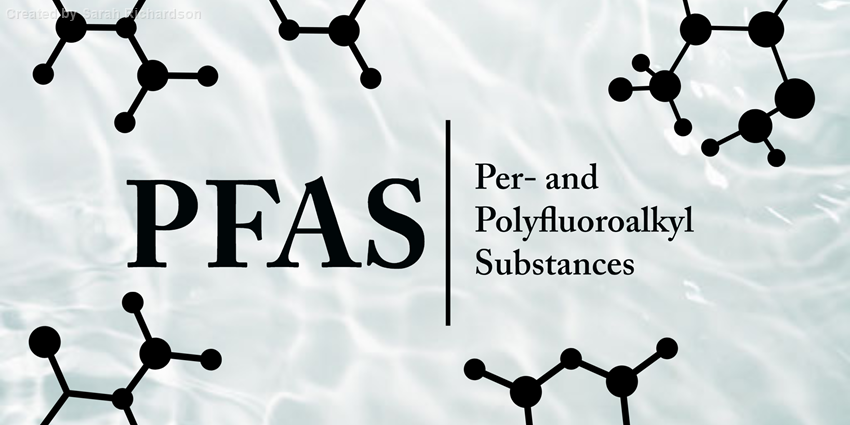Per- and polyfluoroalkyl substances, or PFAS, are a category of thousands of manufactured chemicals, defined by their bonds between carbon and fluorine molecules, one of the strongest known chemical bonds. While scientists have known of PFAS since the 1940s, there are still many unknowns about PFAS and their long-term effects on people and the environment.
However, in recent years more research has revealed that PFAS are found in our air, water, soil and food. Sometimes called “forever chemicals” because their strong chemical bonds make them persist in many environments, PFAS have been shown in research to have potential health consequences as they possibly build-up in the human body.
Forever chemicals, explained
Although there are still some scientific unknowns about PFAS, here is an introduction to the science behind them:
- PFAS refer to a large group of manufactured chemicals used in numerous industries and products.
- Common examples of PFAS include chemicals in nonstick cookware, firefighting foam, microwave popcorn bags and pizza boxes. PFAS are highly heat resistant and repel both water and oil, which is why they are used in firefighting foam. Research teams such as the lab led by Yina Liu, Ph.D., professor of oceanography at Texas A&M University and Texas Water Resources Institute (TWRI) Faculty Fellow, study PFAS in the environment, wildlife and food products.
- There are two different classifications of PFAS: short-chain or long-chain, depending on the amount of carbon atoms found on the chain of the PFAS, said Xingmao “Samuel” Ma, Ph.D., associate professor in the Zachry Department of Civil and Environmental Engineering at Texas A&M University and TWRI Faculty Fellow. Depending on their chemical make-up, long-chain PFAS compounds are typically defined as having more than six to eight carbons, while short-chain compounds usually consist of less than six to eight carbons, Ma said.
- Long-chain compounds have different rates of solubility, transport and toxicity than short-chain compounds, and environmental regulations are different for each. The U.S. Environmental Protection Agency defines long-chain perfluoroalkyl carboxylate chemical substances (PFAC), a subset of PFAS, as having "carbon chain lengths equal to or greater than seven carbons and less than or equal to 20 carbons."
- Landfills and waste disposal sites have some of the highest levels of PFAS, according to an EPA study showing that up to 95% of landfill samples tested positive for high levels of PFAS. Military bases and airports also tend to be places with higher PFAS levels, due to their use of fire extinguishing foam.
- Center for Disease Control and Prevention studies have shown that some PFAS are known to have long residence time in the body. It was previously thought that short-chain PFAS moved through the body faster than long-chain PFAS, but recent studies have revealed that short-chain PFAS actually have an easier time building up, and staying, in our bodies.
- According to the FDA, multiple peer reviewed studies have found that exposure to certain levels of PFAS may lead to negative health effects, and an increased buildup of PFAS in the body may also lead to a decreased immune system and affect endocrine systems.
As regulators and industries continue to grapple with the implications of PFAS, scientists like Liu and Ma are working to further our understanding of PFAS, and to develop deployable technologies to effectively remove PFAS compounds from environments entirely.
Learn more about PFAS:
- Pervasive Problem: Texas A&M researchers discussed PFAS and water in the Winter 2020 issue of txH2O magazine.
- Texas A&M AgriLife develops new bioremediation material to clean up ‘forever chemicals’: learn about PFAS bioremediation research by Susie Dai, Ph.D., Texas A&M Department of Plant Pathology and Microbiology.
- Our Current Understanding of the Human Health and Environmental Risks of PFAS: by U.S. EPA


